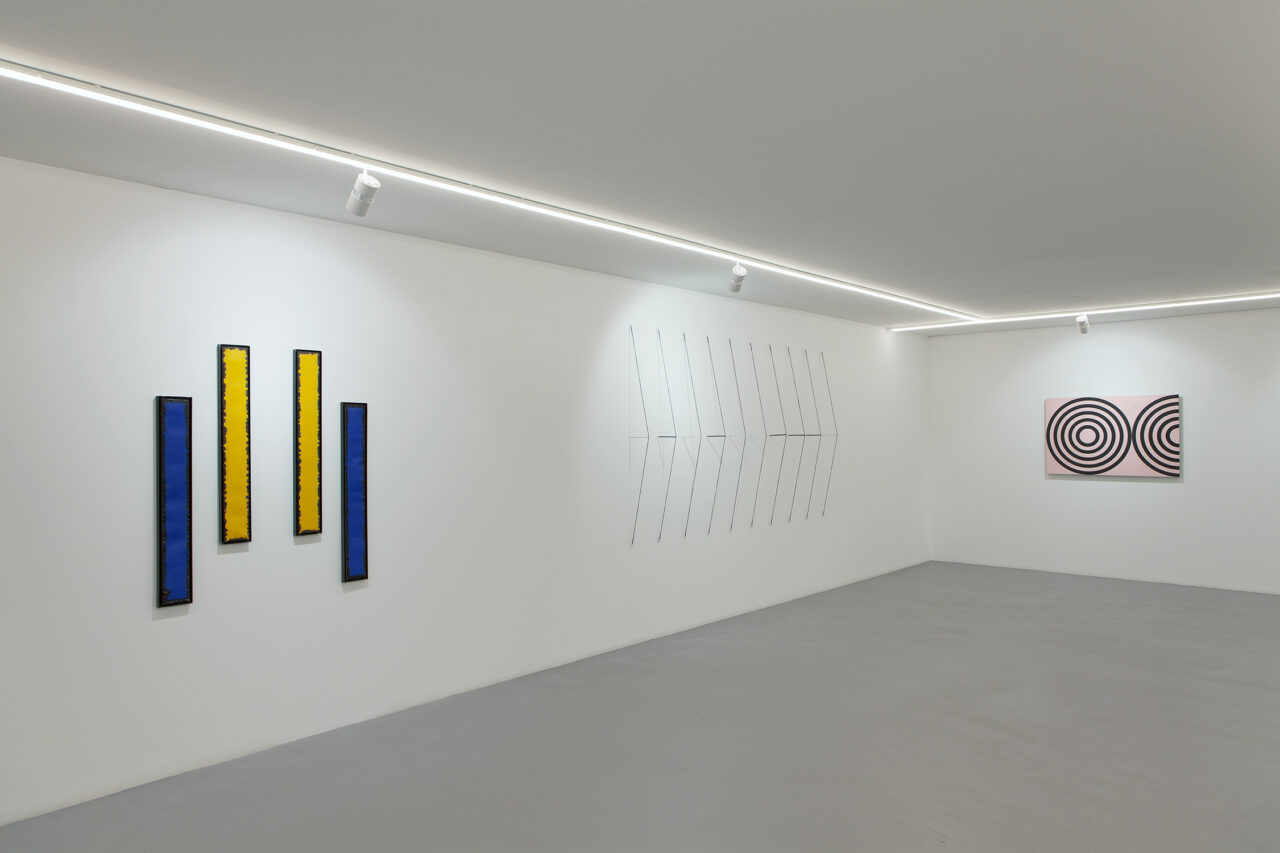Opening Saturday January 13, 2024 from 3 pm
In his essay on the history of lines [1], anthropologist Tim Ingold groups lines into two categories: threads and traces. He also maintains that modernity has emphasized the straight line to the detriment of gesture. However, when our attention shifts to the period that follows (“contemporary” or “post-modern”) his concern may be questioned. The threads and traces remain, but lines also call upon gesture, even when they are straight. We also note that artists, whether abstract or figurative, focus in particular on the “limits” of the demarcation, physical or conceptual. What happens when we alter the boundaries drawn, twisting them, making them go beyond the frame, discontinuing them? When the surface disappears in favor of the line? The works of the eight artists presented here are inhabited by these questions. Their aesthetic proposals differ but they use the line and the notions it covers to open new fields of perception, instead of circumscribing them.
Some draw their inspiration from the production or the representation of sound. This is the case of Kevin Rouillard’s sculpture (Partition for sculpture, 2023). Made with strips of metal, cut from used cans, his work imagines the shaping of a symphonic score in its primitive form. More explicitly, the sculpture by Takis, Musical (1972) introduces sound, movement and temporality. “Played” by an electromagnetic mechanism, it uses the string of a guitar to create a jerky sound which propagates within the gallery.
The will to prolong an artistic proposition beyond its conventional frame is illustrated by other works in this exhibition. The stretched threads of Marco Maggi (Drawing Machine, 2015) whose pencils seem to be at the origin, extend their course beyond the wall. The idea of an existence outside the frame is also present in the paintings of Michael Scott who demonstrates, through an optical effect, that the exit from the frame of one circle in relation to the other gives the impression that its diameter is smaller. And finally, with algorithmic principle this time, the drawing by James Siena, Double Inverted Sagging Triangle Grid (2011) follows a partition logic that could be continued infinitely.
Among its proposals, the exhibition also borrows from figurative works, with a surrealist humor at times. We find, for example, the filiform chairs of Lucas Samaras (Wire Hanger Chair, 1990), twisted and disproportionate, suggesting the idea of a mutation in progress; the linear architectures of Matthew Porter which contradict and fragment the idea of a shelter, or the vertical rope by Philippe Ramette (Ascension irrationnelle, 2006), strangely straight, which seems to respond to an injunction and tends towards the beyond.
[1] Tim Ingold, Lines : a brief history, 2016, ed. Routledge
